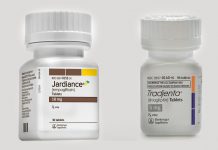A new study, published last week in the journal eLife, has found that a combination of an experimental cancer drug and a widely used diabetes drug improved blood glucose control and weight loss in mice.
The preliminary findings could pave the way for human studies of the new drug combination, which could be used as a more effective long-term treatment for people with diabetes and obesity.
FDA-approved glucagon-like peptide 1 agonists (GLP-1 analogs) are a relatively new class of diabetes drugs that reduce blood glucose levels and lower body weight. They work on pancreatic beta cells, helping them to produce insulin.
Lead author Dr. Prasenjit Mitra of the Dr. Reddy’s Institute of Life Sciences said, “We have previously shown that prolonged association of the GLP-1 agonists with the glucagon-like peptide 1 receptor supports insulin secretion in pancreatic beta cells. This led us to see whether we could enhance the effects of GLP-1 agonism on regulating glucose levels with a complementary therapy.”
The study researchers tested a variety of drugs in pancreatic beta cells to see whether they can enhance the effects of a GLP-1 drug on incretin receptor activity. They found that one experimental cancer drug called entinostat generated more amount of a second messenger molecule called cAMP than GLP-1 alone.
The team found that mice treated with the combination of GLP-1 agonist and entinostat had a much lower fasting glucose level.
They also explored whether the combination treatment minimized weight gain and found that the combination treatment had a significant and sustained reduction in mice’s food intake, resulting in weight loss.
Dr. Mitra explained, “GLP-1 drugs have emerged in the last decade as unique medicines that provide substantial improvements in glycemic control and body weight; however, they seldom achieve full metabolic recovery or help treat associated comorbidities such as body weight.”
“Our results suggest that the class 1 HDAC inhibitor MS-275 can significantly enhance the action of GLP-1 drugs, more effectively normalizing blood glucose and reducing weight gain,” he added. “This lays the foundation for clinical studies of combinations of GLP-1/HDAC inhibitors for the long-term management of diabetes and obesity in humans.” The article originally appeared on Science Daily.





















